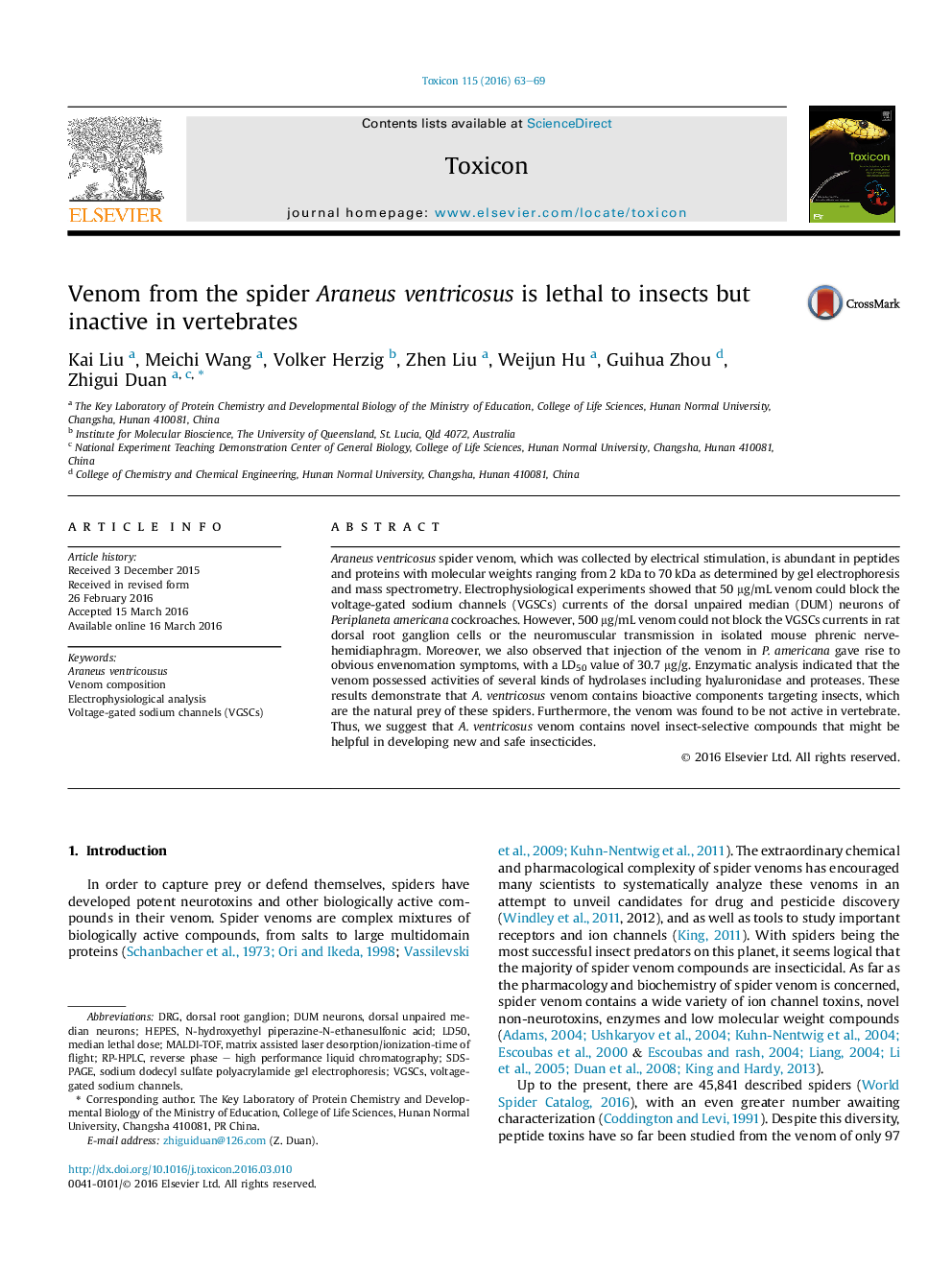| Article ID | Journal | Published Year | Pages | File Type |
|---|---|---|---|---|
| 2064381 | Toxicon | 2016 | 7 Pages |
•Venom from the spider Araneus ventricosus is selectively target insects without affecting vertebrates.•A. ventricosus venom selectively blocks VGSCs currents of cockroach DUM neurons but not rat DRG neurons.•A. ventricosus venom appears to be a promising source of novel and safe bioinsecticides.
Araneus ventricosus spider venom, which was collected by electrical stimulation, is abundant in peptides and proteins with molecular weights ranging from 2 kDa to 70 kDa as determined by gel electrophoresis and mass spectrometry. Electrophysiological experiments showed that 50 μg/mL venom could block the voltage-gated sodium channels (VGSCs) currents of the dorsal unpaired median (DUM) neurons of Periplaneta americana cockroaches. However, 500 μg/mL venom could not block the VGSCs currents in rat dorsal root ganglion cells or the neuromuscular transmission in isolated mouse phrenic nerve-hemidiaphragm. Moreover, we also observed that injection of the venom in P. americana gave rise to obvious envenomation symptoms, with a LD50 value of 30.7 μg/g. Enzymatic analysis indicated that the venom possessed activities of several kinds of hydrolases including hyaluronidase and proteases. These results demonstrate that A. ventricosus venom contains bioactive components targeting insects, which are the natural prey of these spiders. Furthermore, the venom was found to be not active in vertebrate. Thus, we suggest that A. ventricosus venom contains novel insect-selective compounds that might be helpful in developing new and safe insecticides.
